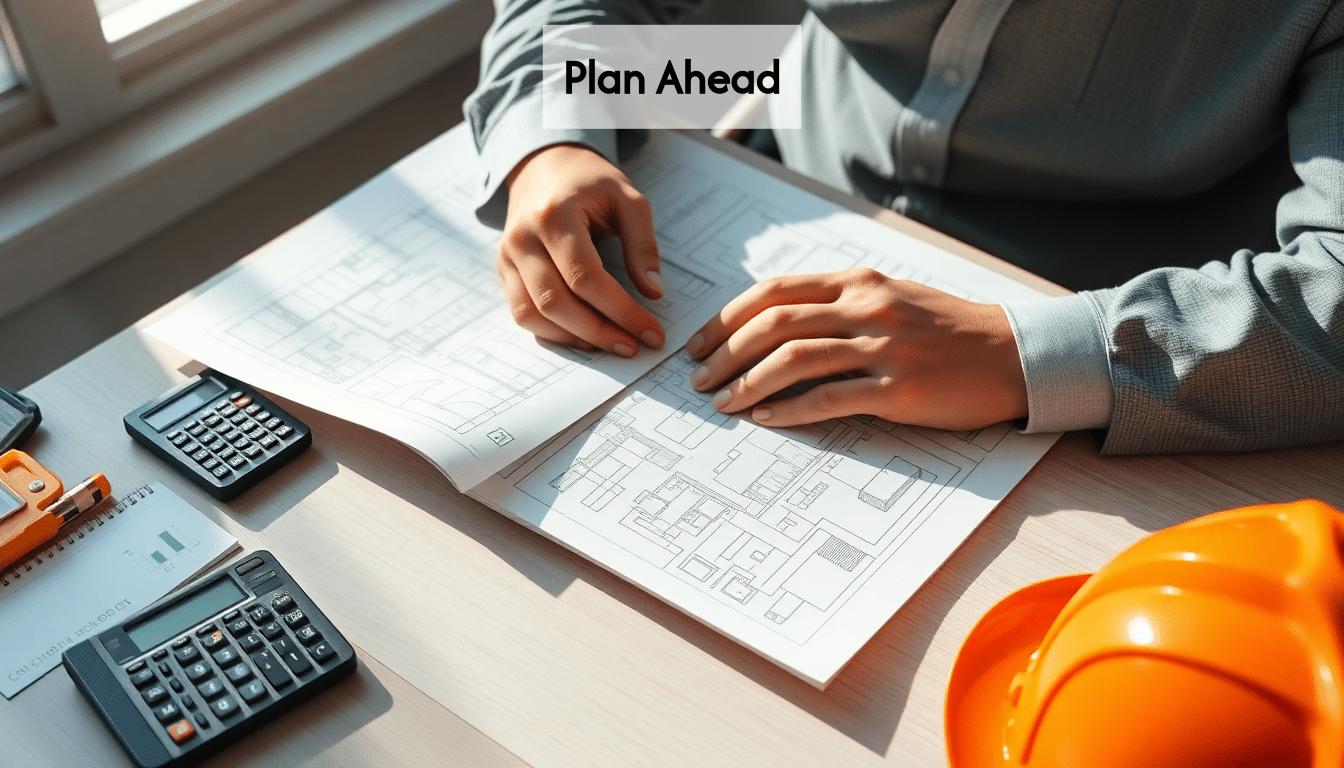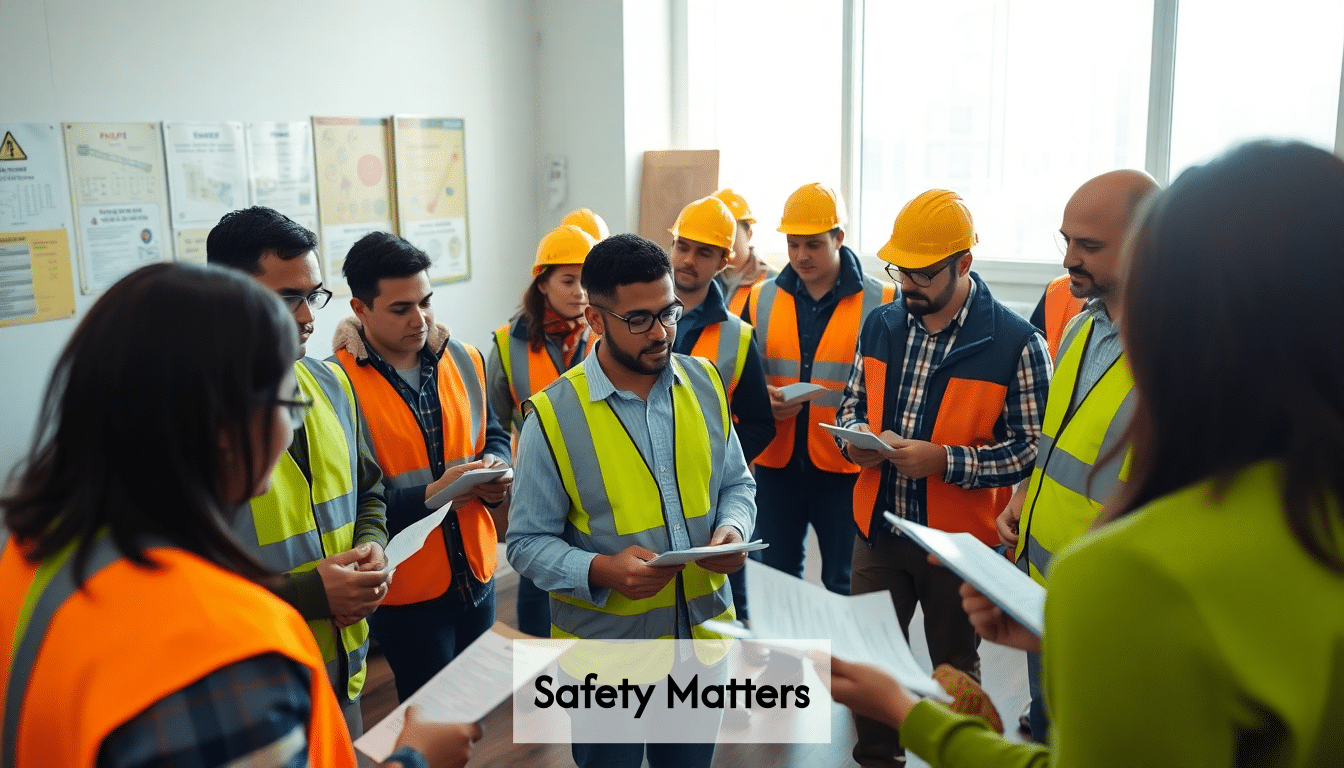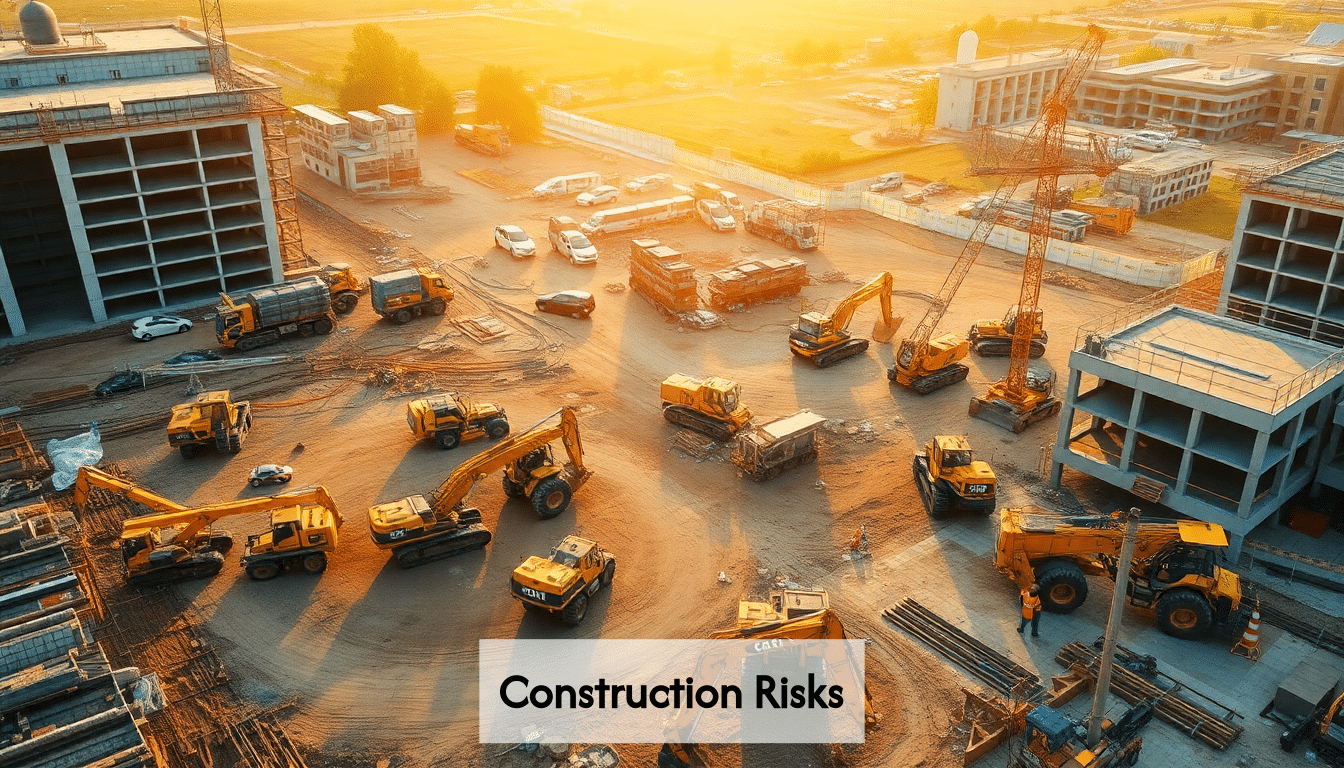Introduction to Construction Risk Management Plan
When embarking on any construction project, there’s a universal truth that seasoned professionals will often whisper: every project is a gamble with risks lurking around just waiting to surprise you. This is where the construction risk management plan steps in, acting as the strategic safety net we all desperately need. But what does that really mean? Let’s break it down together.
A risk management plan for a construction project is essentially a comprehensive framework designed to identify, assess, and prioritize risks throughout the lifecycle of a construction project. From the first shovel hitting the ground to the final nail in place, risk management in construction management is pivotal. It ensures we’re not just building physical structures but also a robust plan to minimize disruption and avoid cost overruns.
Think of a construction risk management plan as your project’s best friend. Just like any good buddy, it’s there to help you navigate through tough times. This plan involves identifying potential hazards—be it financial constraints, regulatory compliance issues, or safety concerns—and laying out strategies to mitigate those risks. A well-crafted risk management plan construction can save you time, money, and even your sanity!
As industry expert John Doe famously said, “In construction, foreseeing risks is half the battle won!” So true! With a strong risk management plan for construction, you can tackle issues head-on instead of waiting for them to bubble up unexpectedly.
To illustrate, let’s consider a real-world example: a large-scale commercial building project faced unexpected delays due to severe weather conditions. Instead of being caught off guard, the team had implemented a comprehensive risk management plan in construction. This foresight allowed them to proactively develop contingency plans that included scheduling adjustments and budgeting for potential delays, ensuring smoother progression even amidst the storm.
In summary, a well-structured construction risk management plan isn’t just a bureaucratic formality; it’s a vital aspect of project execution that can make or break your endeavors. Let’s dive a bit deeper into why having a robust plan is essential.
Key Components of a Construction Risk Management Plan

A construction risk management plan is like a Swiss Army knife for project managers—versatile, comprehensive, and, let’s be honest, essential for survival in the chaotic world of construction. To truly understand how to manage risks in construction effectively, it’s important to grasp its key components. Let’s explore these crucial elements that make your risk management plan for a construction project robust and effective.
1. Risk Identification
The first step in any risk management plan construction is identifying potential risks. This means gathering your team for brainstorming sessions to pinpoint all conceivable risks—whether they are site-specific, environmental, financial, or regulatory. Getting a fresh set of eyes on the situation often uncovers risky situations that might otherwise be overlooked. Think of it as your construction project’s ‘risk radar.’
2. Risk Assessment
Once the risks are identified, it’s time to assess their potential impact and likelihood. This is where you prioritize risks based on their severity. Utilizing a risk management plan for construction, you can categorize risks as high, medium, or low, enabling your team to focus on the most critical issues first. Statistical tools, experience, and judgment calls come into play here.
3. Risk Mitigation Strategies
After assessing the risks, the real fun begins! Here’s where you develop action plans on how to mitigate those risks. These can include strategies such as allocating additional resources, implementing training programs, or even building in contingencies to your budget. As the saying goes, ‘An ounce of prevention is worth a pound of cure’—and that rings particularly true in risk management in construction project management.
4. Monitoring and Review
Just because you had a stellar plan doesn’t mean it’s set in stone. Regular monitoring and review of your risk management plan in construction are essential. Setting up scheduled review meetings makes sure you’re constantly revisiting the effectiveness of your strategies, adjusting when necessary, and keeping the communication channels open. It also allows the risk management plan for a construction project to evolve as conditions change.
5. Documentation
Finally, don’t forget to document everything! Having a clear risk management plan construction in place is only as effective as your ability to communicate it. You need to document your findings, strategies, and any changes made along the way. This record can be a lifesaver for future projects as well—a ready reference helping new teams avoid previous pitfalls.
With these key components, you’re well on your way to laying down the frameworks of an effective construction risk management plan. Remember, managing risks in construction isn’t just about problem-solving; it’s about creating a proactive culture that anticipates and mitigates challenges before they snowball into crises. Let’s keep building on this foundation as we delve further into effective strategies next!
The Importance of Risk Management in Construction Project Management
When it comes to the construction industry, risk is not just an occasional buzzkill; it’s a daily reality that project managers face head-on. Having a solid construction risk management plan isn’t just nice to have—it’s absolutely integral for the success of any project. In this section, let’s get into why risk management in construction management is so crucial.

1. Preventing Cost Overruns
First things first, a risk management plan for construction is your best friend when it comes to budgeting. By identifying risks early—whether they be material shortages, labor disputes, or site accidents—you can allocate extra funds and resources to tackle those risks before they escalate. For instance, consider a project where unforeseen geological challenges arose. With a proactive risk management plan in construction, the team had budget set aside, allowing them to cover extra expenses without breaking a sweat (and without sending their CFO into a tizzy!).
2. Ensuring Safety
Another compelling reason to prioritize developing a robust risk management plan construction is safety. The construction site is one of the most hazardous environments, often referred to as a “danger zone.” A well-thought-out risk management plan for construction helps identify potential safety risks and implement training or protective measures for workers. “Safety first” isn’t just a catchy phrase; it’s a necessity. By managing risks in construction, you not only create a safer work environment but can also prevent legal complications and project delays related to workplace incidents.
3. Meeting Deadlines
Deadlines in construction projects aren’t simply suggestions—they’re often set in stone (or concrete). Delays can lead to financial penalties, reputation damage, and other costly repercussions. A risk management plan for a construction project allows teams to anticipate issues that could derail timelines. For example, if a contractor factors in potential weather-related disruptions and schedules extra lead time for critical tasks, hitting the deadlines becomes much less of a guessing game. Planning ahead truly pays off!
4. Enhancing Decision-Making
With effective risk management in construction project management, decision-making becomes a whole lot clearer. The inherent uncertainties of construction can lead to knee-jerk reactions, but with a structured approach to risk management, decisions can be data-driven, informed by risk assessments and mitigation strategies. Whether it’s choosing the right supplier or deciding whether to proceed with a project milestone, having a sound understanding of potential risks equips decision-makers for success.
5. Building Stakeholder Confidence
Finally, who doesn’t want stakeholders to feel pampered? Having a comprehensive risk management plan can enhance investor and stakeholder confidence in your project. When stakeholders see a clear commitment to managing risks effectively, they’re more likely to feel reassured about their investment. This results in better relationships and potential future collaboration.
In summary, the importance of risk management in construction project management goes beyond just a checklist or a box to tick off. It’s about cultivating a culture of proactive planning that minimizes disruptions and optimizes success. Now, let’s explore the strategies you can implement to strengthen your construction risk management plan!
Strategies for Managing Risks in Construction Work
Now that we’ve laid the groundwork on why a construction risk management plan is pivotal, let’s roll up our sleeves and discuss some effective strategies for managing risks in construction work. Every site presented unique challenges, but these techniques can help you tackle problems before they snowball into full-blown issues.
1. Comprehensive Risk Assessment
To start the ball rolling, conduct a thorough risk assessment at the project’s outset. This involves gathering your team to brainstorm and identify all conceivable risks—financial, operational, environmental, and legal. It’s like assembling your Avengers team, where each member brings their powers to the table. Utilize tools such as SWOT analysis (Strengths, Weaknesses, Opportunities, Threats) to give your risk evaluation a structured approach.
2. Use Technology for Real-Time Insights
Let’s face it, folks: technology is our friend in the construction biz! The modern age offers tools such as project management software and mobile apps that can help track risks in real-time. For example, using Building Information Modeling (BIM) allows for greater design and structural oversight, reducing the likelihood of costly changes down the line. By employing these tools, your risk management plan for construction stays one step ahead.
3. Engaging in Regular Training
You can’t underestimate the power of knowledge! Enhance workers’ awareness by scheduling periodic safety training and workshops. This is especially crucial in labor-heavy construction environments. Staff need to know how to identify risks and respond properly—essentially arming them with the knowledge to stand by your risk management plan in construction. Moreover, regular training can decrease the number of workplace incidents, saving both time and money in the long run.
4. Implementing Effective Communication
A risk management plan for a construction project demands crystal-clear communication. Ensure that all team members are on the same page regarding the risks identified and the mitigation strategies in place. This could be through daily briefings or project updates. The last thing you want is for one team member to be blissfully unaware of potential safety hazards! As the famous saying goes, “Communication is key!”—so keep those channels open.
5. Develop Contingency Plans
Next up, don’t just cross your fingers and hope nothing goes wrong! Craft well-thought-out contingency plans for the various risks you’ve assessed. This could include alternate suppliers for critical materials or a backup crew skilled in emergency site operations. Knowing you have a plan B (and C, and D) allows the construction team to respond swiftly, minimizing disruptions to the project.
6. Foster a Risk-Aware Culture
Lastly, building a culture of risk awareness among your workforce is vital. Encourage open discussions regarding potential risks and rewards. Reward your team for reporting potential risks or suggesting improvements that align with the risk management plan in construction projects. This proactive attitude towards managing risks not only increases compliance but also enhances overall project success.
In summary, effectively managing risks in construction work involves thorough preparation, the right technology, and fostering a culture of safety and awareness. With these strategies in place, your construction risk management plan will be a fortress against unexpected challenges! Ready to dig deeper? Let’s explore how to implement these strategies effectively!
Frequently Asked Questions
What is a construction risk management plan?
A construction risk management plan is a strategic framework designed to identify, assess, and prioritize risks throughout the lifecycle of a construction project to minimize disruption and avoid cost overruns.
Why is risk management important in construction projects?
Risk management is crucial in construction projects to prevent cost overruns, ensure safety, meet deadlines, enhance decision-making, and build stakeholder confidence, enabling smoother project execution.
What are the key components of a construction risk management plan?
The key components include risk identification, risk assessment, risk mitigation strategies, monitoring and review, and documentation, all aimed at effectively managing potential risks during the project.
How can technology assist in managing risks during construction?
Technology such as project management software and Building Information Modeling (BIM) can provide real-time insights and oversight, helping to track risks proactively and reduce the likelihood of costly changes.
Bridge the Gap in Your Construction Projects with Expert Talent
In the world of construction project management, unforeseen risks can derail even the most carefully laid plans. Think about it: missed deadlines, budget blowouts, and safety concerns can create a ripple effect that impacts not just your bottom line, but also your reputation in the industry. With a construction risk management plan outlining clear strategies like risk identification and mitigation, you can navigate these challenges with finesse. But where do you find the right talent to execute these strategies effectively?
Enter Amundson Group! Our recruitment platform is perfectly positioned to connect you with skilled professionals who understand the intricacies of risk management in construction. Whether you’re looking to fill roles in heavy civil, commercial sectors, or specialized projects such as data centers and wastewater systems, we are committed to meeting your needs. Experience a seamless hiring process backed by testimonials from satisfied clients who have turned their projects around.
Don’t let unexpected challenges escalate—strengthen your team now! Visit Amundson Group today for tailored talent acquisition solutions that ensure your projects are staffed with the best in the business. Are you ready to build your dream team and achieve project success? Your future begins here!





